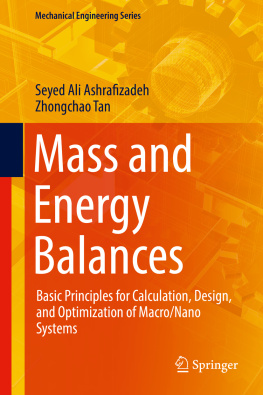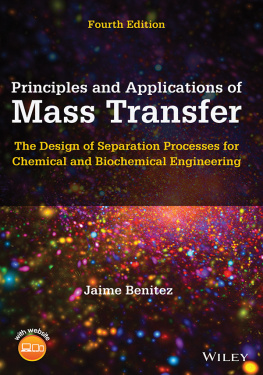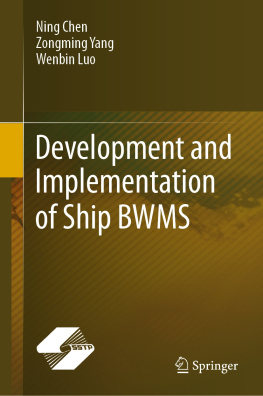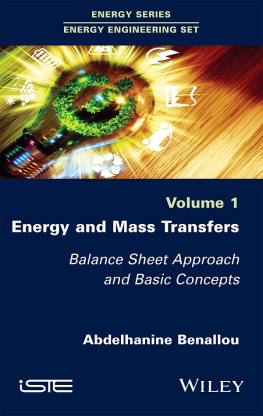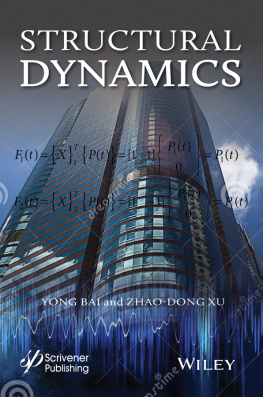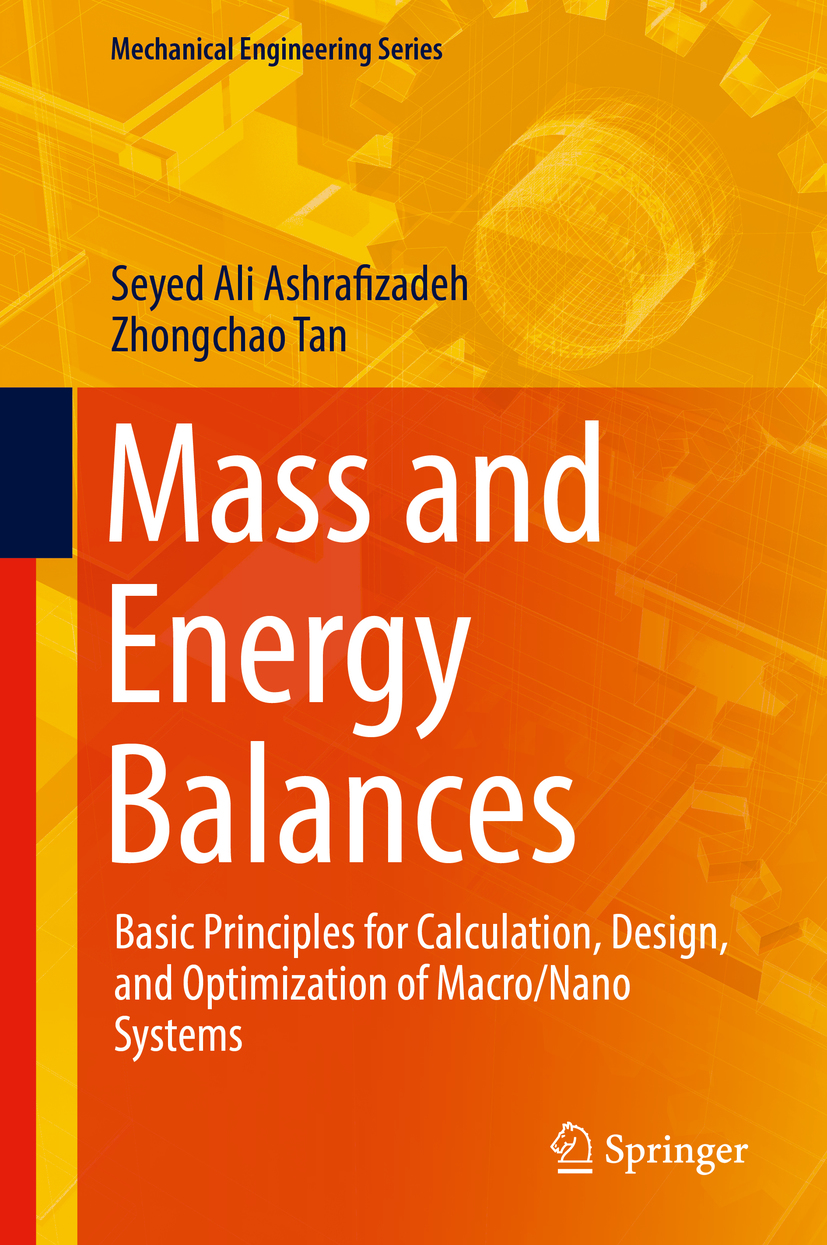Mechanical Engineering Series
Series Editor
Francis A. Kulacki
Department of Mechanical Engineering, University of Minnesota, Minneapolis, Minnesota, USA
The Mechanical Engineering Series presents advanced level treatment of topics on the cutting edge of mechanical engineering. Designed for use by students, researchers and practicing engineers, the series presents modern developments in mechanical engineering and its innovative applications in applied mechanics, bioengineering, dynamic systems and control, energy, energy conversion and energy systems, fluid mechanics and fluid machinery, heat and mass transfer, manufacturing science and technology, mechanical design, mechanics of materials, micro- and nano-science technology, thermal physics, tribology, and vibration and acoustics. The series features graduate-level texts, professional books, and research monographs in key engineering science concentrations.
More information about this series at http://www.springer.com/series/1161
Seyed Ali Ashrafizadeh and Zhongchao Tan
Mass and Energy Balances Basic Principles for Calculation, Design, and Optimization of Macro/Nano Systems
Seyed Ali Ashrafizadeh
Department of Mechanical & Mechatronics Engineering, University of Waterloo, Waterloo, ON, Canada
Zhongchao Tan
Department of Mechanical & Mechatronics Engineering, University of Waterloo, Waterloo, ON, Canada
ISSN 0941-5122 e-ISSN 2192-063X
Mechanical Engineering Series
ISBN 978-3-319-72289-4 e-ISBN 978-3-319-72290-0
https://doi.org/10.1007/978-3-319-72290-0
Library of Congress Control Number: 2017961509
Springer International Publishing AG 2018
This work is subject to copyright. All rights are reserved by the Publisher, whether the whole or part of the material is concerned, specifically the rights of translation, reprinting, reuse of illustrations, recitation, broadcasting, reproduction on microfilms or in any other physical way, and transmission or information storage and retrieval, electronic adaptation, computer software, or by similar or dissimilar methodology now known or hereafter developed.
The use of general descriptive names, registered names, trademarks, service marks, etc. in this publication does not imply, even in the absence of a specific statement, that such names are exempt from the relevant protective laws and regulations and therefore free for general use.
The publisher, the authors and the editors are safe to assume that the advice and information in this book are believed to be true and accurate at the date of publication. Neither the publisher nor the authors or the editors give a warranty, express or implied, with respect to the material contained herein or for any errors or omissions that may have been made. The publisher remains neutral with regard to jurisdictional claims in published maps and institutional affiliations.
Printed on acid-free paper
This Springer imprint is published by Springer Nature
The registered company is Springer International Publishing AG
The registered company address is: Gewerbestrasse 11, 6330 Cham, Switzerland
This book is dedicated to my wife, Farnaz.
Her support, encouragement, and constant love have sustained me throughout my life.
S. Ali Ashrafizadeh
To my family and students.
Zhongchao Tan
Preface
Mass and energy balance (MEB) analyses are the first steps in the calculations for an engineering process. They are useful tools for chemical, mechanical, energy, and environment engineers. Engineers will have a better understanding of the principles of thermodynamics when they have a good perception of MEB. MEB is at the roots of the important issues such as process design and system optimization . In reality, we do see a large number of engineering graduates who have many difficulties in this regard.
Although this book aims at undergraduate students in the engineering fields mentioned above, it can also be used by professionals with similar training backgrounds. With about 15 years of teaching experience, we decided to publish this work so that it can reach more people in the world. In this book, we have tried to explain the materials in a simple way, and the practice problems are solved by relatively new techniques than many existing references.
Following a brief introduction to basic concepts, Chaps. focuses on the simultaneous calculation of energy and mass balances, which finds many applications in industries.
Chapter is devoted to nanotechnology-related subjects. It aims to provide a state-of-the-art literature review in mass and energy balances for nanoparticles and nanoscale thermodynamics. Due to the complexity of thermodynamic properties of nanoparticles, some thermodynamic methods are introduced to mass and energy balances so that calculations can be carried out more easily.
Seyed Ali Ashrafizadeh
Zhongchao Tan
Waterloo, ON, Canada
About This Book
S. Ali Ashrafizadeh
Zhongchao Tan
This book focuses on basic principles for the calculation, design and optimization of industrial devices and equipment such as energy, chemical, petroleum, and other industries. It aims primarily at undergraduate students in chemical, mechanical, energy, and environmental engineering; it can also be used as a reference book for technical staff and design engineers who are interested in basics of process engineering. In addition, new materials are introduced in mass and energy balances for nanoparticles in Chap..
We try to explain the concepts in a simple way and hope you can take the full advantage of these resources. Note that reading and listening are not learning, and most of us learn by experience and practice. Therefore, a great amount of real-life examples are used in the book. For students, we recommend you to read the objectives before lectures and work with someone else to exchange ideas and discuss the materials delivered in class. Also try to solve the practice problems listed at the end of each chapter, and compare your approaches with others. You may need calculators or computer programs to solve the problems. Graphs and tables are given at the end of the book as appendices. Users are strongly encouraged to get familiar with the tables and curves before attempting the example and practice problems.
Last but not least, our thanks go to all the individuals and organizations that have contributed and supported our work herein. Our special thanks go to Mr. Beham Alinejad, who helped to collect part of the materials in this book. Suppl emental materials including solution to practice problems can be found at http://tan.uwaterloo.ca/book.html . We look forward to your feedback and comments.
Acronyms
AE
American engineering
AS
Absolute saturation
BTU
British thermal unit
DNA
Deoxyribonucleic acid
EGM
Entropy generation minimization
FLT
First law of thermodynamics
HHV
Higher heating value
IPK
International prototype of the kilogram
LHV
Lower heating values
MEB
Mass and energy balances
MOO
Multi-objective optimization
MS
Molar saturation
NG
Natural gas
ppb
Part per billion

